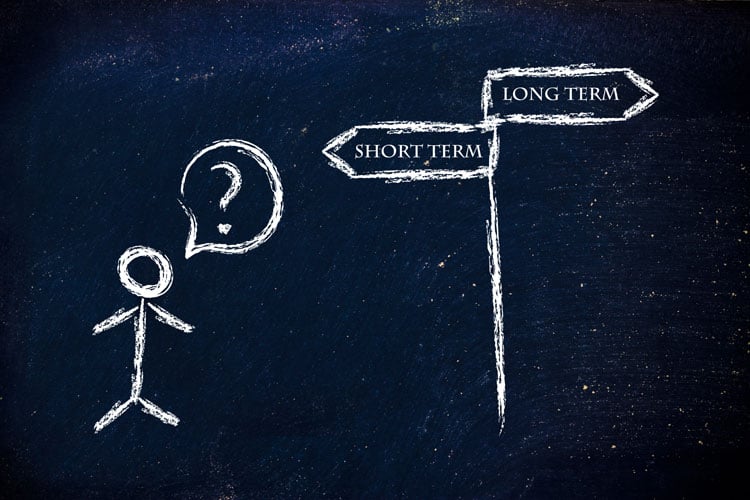THIS POST MAY CONTAIN AFFILIATE LINKS. PLEASE SEE MY DISCLOSURES FOR MORE INFORMATION

If you are being honest, the answer is probably more than you want to admit.
But don’t feel embarrassed.
We all are in the same boat.
Including me.
I’ve failed at things so many times, I’ve lost track.
But I’ve learned a secret trick to be successful when reaching goals.
And ever since I learned of it, I am succeeding at goals I set for myself on a regular basis.
What is this secret trick?
It’s the power of tiny habits.
Here is a quick example of how using tiny habits has paid off for me.
I love eating pizza and burgers.
But I know I need to watch what I eat and eat healthier. I tried numerous times but always quit. The changes I was making weren’t sustainable for the long term.
I then read about tiny habits and gave it a try.
I introduced a vegetable to each meal I ate.
At first, I only ate the few vegetables I liked. But as this became a habit, I started to introduce new vegetables into the mix.
For snacks, I make it a point to include fruit into each snack I eat.
Now, I eat 5 servings of fruits and vegetables a day. I still have my pizza and burger every now and then, but not like I used to.
The change was easy and never felt overwhelming.
By adding just one item to each of my meals, I was able to improve my eating habits.
In this post, I am going to help you understand what tiny habits are and why they work.
I’ll even help you out by giving you 28 examples of tiny habits you can start using today to jump start your transformation into a better, more rewarding life!
The Power Behind Tiny Habits
What Are Tiny Habits?
Tiny habits, or micro goals, are habits that you are going to introduce into your daily routine.
They are called tiny habits because you start off with a very tiny thing before working your way up to your goal.
Over time, this habit stacking is going to help you reach your goals.
For example, let’s say your goal is to lose 20 pounds.
For most people who set a goal to lose weight, they completely overhaul their life.
You join a gym and go 8 days a week. Then you spend a boatload of money on healthy food at the grocery store.
Everything is great for a few days.
Then the plan implodes.
You do too much at the gym and get hurt or are too sore to continue. You crave your pizza or fries and give in just once, which turns into a 3 day binge.
By the second week, you’ve given up completely.
What happened?
You tried to do too much too fast.
I get that we all want results, but you have to be realistic.
Change takes time. You have to make a new routine into a habit for it to stick long term.
And the best way to do this is to go as slow and as tiny as possible.
So what does your goal of losing weight look like when you use tiny habits?
First, you break the goal down into basics.
In order to reach this goal, you are going to have to become more active. In this case, any activity is good.
You now have your goal (lose 20 pounds) and you have a new habit that you want to become routine for you, being more active.
Your next step is to break down the habit of being more active into micro goals so that you increase the likelihood of achieving the goal.
There are numerous ways you could introduce tiny habits into your everyday life:
- You could park father away at the train station, in the parking lot at work, or when running errands
- You could do 5 pushups after every time you go to the restroom
- You could do pushups or wall squats after every time the phone rings
- You could march in place or do jumping jacks after getting out of bed in the morning
There are endless tiny habits you can start using.
The key is that they be simple things you can do quickly. One way you know if the habit is tiny enough is to see how long it takes you to perform.
To qualify as tiny, it needs to last 30 seconds or less.
Once you perform the tiny habit a few times it can last longer. But for starters, aim for 30 seconds or less.
Anchoring Your Tiny Habits
The second key to turning your tiny habits into a big habit is anchoring them to current routines.
We all have routines in life and connecting a new tiny habit to these routines will greatly improve the chances of the tiny habits sticking.
Take the example above of doing jumping jacks in the morning.
Tie the alarm going off in the morning to doing jumping jacks. When you hear the alarm, you know it’s time to get out of bed and get ready for work.
What is the first thing you do once you get out of bed?
For many, you jump in the shower. Do you think about jumping in the shower? Do you have to plan to shower?
No, you just do it because it is a habit.
We want to make jumping jacks a habit as well. We want to do them without thinking.
So when you hear the alarm clock go off, get out of bed and do jumping jacks. But here is the important key.
Take it slow.
So slow in fact, that you think it is pointless. Start off with 2 jumping jacks.
This qualifies as a tiny habit because it lasts less than 30 seconds.
I know what you are thinking.
You won’t get a lot of benefit from doing just two.
The point when you start off isn’t a huge number but rather creating a routine.
You want to start off so small that you don’t even notice the effort. As time goes by, you can slowly increase the number of jumping jacks you complete.
Before you know it, you will hear the alarm, turn it off, get out of bed and do 100 jumping jacks without even thinking.
What you did was take a tiny habit, 2 jumping jacks, and turned it into a new daily routine of 100 jumping jacks every morning.
Over the course of a year, you did 36,500 jumping jacks!
Reward Yourself
The final part of the tiny habit process is to reward yourself for doing the tiny habit.
After you complete your two jumping jacks, give yourself a high five. Or look in the mirror and tell yourself “great job”.
By reinforcing the tiny habit with words of encouragement, we help make the habit stick.
This works because we feel good about doing the tiny habit and by rewarding ourselves, we begin the process of rewiring our brains to get excited to do jumping jacks in the morning.
Summarizing The Tiny Habit Process
Here is the complete rundown for making tiny habits work long term in your life.
- Step #1: Break a goal down into tiny pieces
- Step #2: Anchor that tiny piece to a routine you currently do
- Step #3: Reward yourself when you complete the task
Here is how these steps look when using tiny habits for weight loss as we did above.
- Step #1: You want to lose weight, so your tiny piece is to be more active
- Step #2: You will do a couple jumping jacks when you are waiting for the water to warm up
- Step #3: You will look in the mirror and tell yourself you did a great job
Once 100 jumping jacks in the morning becomes a habit, you can start introducing other new habits into your routine as well.
And don’t think you can only create one habit at a time.
You can do a couple. But you have to make certain they are small and don’t require any effort to start.
For example, you could choose to do the jumping jacks in the morning and then after dinner go for a walk.
Just remember to keep the walk super short at first and to slowly build up over time.
Why Tiny Habits Work
If you are like me, when you first began reading about small habits like this, you were skeptical.
And you still might be.
How can such small things have any impact at all on your life?
Unfortunately, humans are wired to think that big rewards are always better than smaller ones.
For example, if I were to offer you $50 or $250, you would opt for the $250.
Everyone would.
It’s called hyperbolic discounting.
A larger part of this hyperbolic discounting is thinking that immediate rewards are better than future rewards.
So if I offered you the same $50 or $250 dollars, only this time said you could have $50 today or $250 in 3 months, most would opt for the $50.
Your brain sees the immediate reward of the $50 you want it now even though the delayed option could be the better choice.
Studies have proved this out numerous times.
And this plays out over and over in life.
It’s partly why so many people don’t save for retirement until they are ready for it.
They deal with the day to day things that arise in their lives and ignore saving money for the long term.
When the long term becomes the near term, then they start saving.
Or it is why people wait until one month before their wedding to start a diet to lose weight.
It’s not until the wedding date becomes more urgent that they begin to take action.
Making Tiny Habits Work For You
Here is your blueprint for using the power of tiny habits to help you reach your goals.
First, outline what your goal is.
Make sure your goal is specific. I can’t tell you enough how important this is.
Your goal cannot be to lose weight or retire one day. You need to get specific.
How much weight do you want to lose? What age do you want to retire? What does retirement look like to you?
The more specific you are, the more tangible and attainable the goal will be.
Once you have your goal outlined, start thinking of tiny things you can do to help you reach your goal.
Remember, the idea here is to make the habit so small you can do it without thinking.
If your goal is to lose weight, start out by doing wall squats for 10 seconds in the morning while you wait for the shower to get hot.
Another option is to drink a glass of water with lunch instead of a sugary drink.
And finally, once you outline your goal and you do your tiny habit, reward yourself with words of encouragement.
You don’t need to throw a huge party. Just look in the mirror, smile and congratulate yourself.
28 Tiny Habits You Can Start Doing Today
Now that you know the process for creating new habits, you might need some ideas to get started.
Here is a great list of 28 tiny habits that you can start doing today to change your life for the better.
They encompass everything from health to wealth and everything in between.
#1. Upon waking, be grateful. Say thanks for the great day you are going to have. This will help you to put your mind in a positive place and help you to be more productive.
#2. Drink a glass of water first thing when waking up. This will help to wake you up.
#3. Wake up 1 minute earlier each day. Do this until you find the time that is in tune with your circadian rhythm.
#4. Make your bed. It sounds crazy but it will help to get you going for the day.
#5. Drink a glass of water before every meal. This will help make you feel fuller and as a result you will eat less.
#6. Take the stairs. This will help you be more active. Of course, if you are going for a job interview on the 20th floor, take the elevator. But take the steps afterwards!
#7. Park farther away. The farther away you park, the more you have to walk and this will help you maintain or even lose weight.
#8. Stretch. When you stop working for a morning snack, take a few minutes and do some basic stretches. If you sit all day, your hip flexors get tight. Here is a good stretch to keep them loose!
#9. Pack snacks. Always keep some snacks like nuts in your car or in your bag. This will help stop you from overeating during meals. It will also save you money by not buying a candy bar or other junk food to hold you over.
#10. Eat a fruit or vegetable with every meal. Make it a point to eat some fruit or vegetables with every meal. This will help you to eat healthier and maintain your weight.
#11. Get away from your desk at lunch. This doesn’t mean you should go out to eat at a restaurant, but leave your office. Eat in the lunchroom or go outside. Doing this gives you a break and helps you to think more clearly the rest of the day.
#12. Do some form of exercise every day for at least 5 minutes. Pushups, jumping jacks, burpees, whatever. Just get moving.
#13. Take 10 minutes of quiet time. At some point during your day, find a quiet place, close your eyes and breathe. Just relax and try to clear your mind. This will help improve your mood.
#14. Do a brain dump. Before you lay down for bed, take a minute to write down everything that is on your mind. This will help clear your mind and allow you to fall asleep faster.
#15. Review your day. What were some awesome things that happened to you today? What could you have done to make it a better day?
#16. Reach out to a friend or family member every day. You can just send a quick text or email asking them how they are. Keeping close relationships is a key to happiness.
#17. Leave your cell phone in another room when eating dinner. Have a conversation with your partner or family. Ask them about their day, talk about goals, memories, etc.
#18. Say hello to people you pass. You don’t have to be creepy about it, but when you pass someone on the street, make eye contact, smile and say hello. It will make you feel better and may improve their day!
#19. Set up an automatic transfer of money. By just saving some change every day, it can compound into a large amount of money.
#20. Review your finances. This doesn’t have to be a detailed review. Just take a few minutes to think about how and where you spent money today. What can you do differently tomorrow? Doing this I learned I tend to lack willpower when I am tired and as a result, I eat junk food for lunch. Knowing this allows me to take steps when I am tired to skip the junk food and save myself money.
#21. Cancel unused services. When you are reviewing your finances, pay attention to memberships or subscriptions you no longer use. Cancel them to save money. You can use Trim to help with this.
#22. Use to do lists. When you shop with a to do list, you are more likely to stick to it and avoid buying random things.
#23. Shop with a basket, not a cart. The less room you have for stuff, the less likely you are to buy things you don’t really need. I’ve used this trick a lot and it really works wonders. I’ve put things back on the shelf even though they were on my list because I realized I didn’t need the item as much as I thought.
#24. Ask for a discount. It only takes a few seconds to ask and many times the cashier has a coupon they can scan or a special code they can apply to help you save money.
#25. Scan the internet. In addition to the point above, when you are waiting in line, jump on your phone to see if there are any coupons you can use. My wife does this on a regular basis and finds some discount to apply to our purchase most of the time.
#26. Use a cash back site when shopping online. If you can save money while shopping, you might as well take advantage of it. I use Ebates and earn a few hundred dollars in cash back every year.
#27. Use cash, not credit cards. It’s incredible how much less money you spend when you pay with cash versus credit. The emotional connection seeing money leave your wallet is real.
#28. Think about your life. Take a few minutes everyday and think about your life and what you want out of it.
Final Thoughts
Making large changes to our lives is a lot harder than most of us want to admit.
We are creatures of habit and like our routines. This is why it is so hard to lose weight or save money for retirement.
This is where tiny habits come into play.
By doing something small and seemingly insignificant, we can create a habit without realizing what we are doing.
Before we know it, the tiny habit is now a daily routine.
If you want to change your life, use the power of tiny habits to your advantage.
You will be amazed at how something so tiny can have such a dramatic impact on your life.
I know that might be hard to believe seeing how tiny they are.
But if you can make them into a daily habit, over time you are going to see massive changes for the better in all areas of your life.
You are going to have more energy, sleep better, be more successful in all that you do and will be happier as a result.
So give tiny habits a try. You’ve got nothing to lose and everything to gain.

Jon Dulin is the passionate leader of Unfinished Success, a personal development website that inspires people to take control of their own lives and reach their full potential. His commitment to helping others achieve greatness shines through in everything he does. He’s an unstoppable force with lots of wisdom, creativity, and enthusiasm – all focused on helping others build a better future. Jon enjoys writing articles about productivity, goal setting, self-development, and mindset. He also uses quotes and affirmations to help motivate and inspire himself. You can learn more about him on his About page.




I use a mindfullness timer that goes off every 20 or 30 minutes. When it sounds I take a few breaths and get up — do squats, walk around, clean something, etc.
That’s great Phyllis. My fitness tracker is my mindfullness timer. It reminds me to stop and get up and move around.
I have something very similar to Phyllis’s timer. It helps me in both “directions” – since I have a hard time staying focused on things, it keeps me going for a solid 30 minutes, and the longer I’ve used it the easier it has become. Then, it makes sure that I’m up every half hour, and one tiny habit I started was to drink a small glass of water during every break, since I knew I wasn’t hydrating myself enough. Now drinking water is a habit.
I’m also making daily meditation a tiny habit. It’s difficult to set aside an hour to meditate, so I started with just 5 minutes a day, and I’ll move it up incrementally until an hour of meditating is how I start my workday. 🙂
What a wonderful fresh idea! I have been trying to motivate myself in the am to exercise, doing little by little, but loosing interest. After reading you’re blog, I will start doing jumping jacks in the am. Starting off slow, is doable! Now I am excited about my small steps becoming routine! So thank you for the great push I needed.